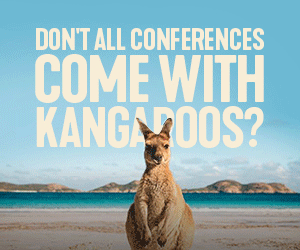Establishing Cultural Agility & Intercultural Competence

Marit Imeland Gjesme, Founder of CultureCatch Consultancy, shares with HQ readers how to successfully optimise cross-cultural teams and business meetings. Before you proceed, click here if you haven't read part one of this interview.

HQ: In your opinion, how do cultural values and diversity enhance global meetings? How can we successfully optimise cross-cultural meetings to make them meaningful for all?
MIG: Diversity and broader perspectives always enrichen a meeting and the results one possibly can create together, compared to homogeneity. But it requires a lot more efforts and facilitation.
Basic clue: make sure everyone feels respected! Meetings are affected in the way that our cultural values and preferences cause us to both expect and like different things, and this must be accounted for both in preparations, expectation management and meeting facilitation. Let’s for now stick to the overall 3 cultural categories (red, blue and yellow, we call them multi-active, linear-active and reactive), and let´s imagine an example; 3 cultural groups are having a meeting, Danes (blue category, linear-active), Emiratis (red category, multi-active, with some reactive traits) and Japanese (yellow category, reactive).
What will they expect and want to get out of the meeting?
The Danes will, in general, expect a detailed, well-structured agenda, focus on sharing information, the importance of punctuality and economic use of time, sticking to facts, open expressions of opinions without indirectness and diplomatic formulations, discussions and issues presented and solved one by one. Factors such as neutral info, figures, products, quality, price, implementation of innovation and action plans are valued. Generally, challenging others and being challenged are accepted, as are confrontations and expressing disagreements. Small talk and socialising will not be a requirement, the issues one meet for are more important than the personal aspects and building relationships.
The Emiratis would, in general, be much more people and relationship-oriented than facts and product oriented, would have a more flexible and “creative”, random agenda and far less punctual use of time, would like endless socialising, bonding, expression of opinions (but no open confrontations), form alliances, inspire one another and end meetings with many loose ends, lots of good ideas but very few action plans. They would love humorous and creative activities, especially with a team building aim. Hierarchy, honour and dignity would be a major priority and group orientation and identification would play a much bigger role than for the individualistic and egalitarian Danes. They might find the Danes with their outspoken honesty a bit insensitive, rude and pushy, probably even “cold”. Then we would have the Japanese whose aims and intentions would be harmony, showing (and expecting) respect and preservation of face, no disagreements or conflicts, not want to be challenged or expected to give individual opinions or make decisions or commit to anything before after a long process, they would search for harmony, assessing the other people present and the possibilities for building long term relationships, trust and potentially business.
The likelihood of these outcomes depends on how well the Danes and the Emiratis are able to behave seen from the Japanese point of view. The Japanese will attend meetings for the face to face contact and “checking people out”, for the chance of building trust and relationships with a long-term perspective, listen much more than speak, present company or employer position, and nothing will be expressed that puts a harmonious atmosphere at risk. The others, especially the Danes, would probably get frustrated by not getting “anything out of” the Japanese, not knowing their opinions and thoughts, thinking that nothing moves forward in the meeting. In their speaking and listening styles, the Danes would find it normal to take turns, speak and listen in equal proportions, while the Emiratis would talk over one another all the time, happily interrupting – the Danes would think they didn’t listen and maybe find this rude, but from an Arabic point of view, this is the polite way of showing engagement and listening – and they actually do get it all! None of them is good at dealing with silence and long pauses, while the Japanese would dislike the constant “filling of the silence” and the push for opinions and participation – they would have long silences after each input, consider it carefully and prefer harmonious silences for reflection and digestion.
Like the Emiratis, the Japanese will value relationship- and trust building socialising, but be much more reserved and shy, and it will in practice be very difficult since the Japanese usually only will socialise, relax and open up with alcohol involved, which would be a total no-go to take part in for the Emiratis. Which means dinners with all would feel very uncomfortable and disrespectful for the Emiratis if the others are drinking alcohol, and dinners with no alcohol would prevent the reserved Japanese from having a chance to loosen up – and they would go somewhere else as a group. Such taboos must be planned for, so you can design activities that will include all and not offend anyone.
On top, there will of course always be lots of more specific and personal characteristics – both more locally specific culturally wise and other things – that determine the successful outcomes of global meetings, but as a thumb rule, the risk of failure will be significantly higher if you ignore strong cultural basic preferences.
If everyone is to get meaningful output from the same meeting, it needs careful planning and facilitation not to end up as an endless waste of time and a cause of frustration. How to plan, balance and facilitate these factors are things to consider in any multicultural meeting!
How can we tailor-make effective marketing campaigns for diverse cultural markets?
I guess you have figured it out now: No marketing campaign will have the same effect or be equally impactful everywhere across cultural categories! We MUST tailor according to target groups. For a starting point, I would always remember to make sure that deeply rooted cultural preferences are visible, emphasised and respected. The three main factors of Aristotle’s advice for persuasion and influencing (Logos, Pathos and Ethos) are eternally helpful and inspirational. Similar to giving successful and convincing presentations, all three must be present, but in different proportions and with different main emphasis.
For the linear-active / blue cultures, LOGOS has the best effect. This means clear information, accountability, logic, facts and structure. Not too much “fluffiness”, effects and emotional stuff! For the multi-active/red cultures, the PATHOS works best: activation of emotions, passion, colours and effects, fun, charisma and personal bonding. The ETHOS will have a strong grounding in the reactive/yellow cultures, where the “who” is important – the ethics, the known credibility and seniority, loyalty to long term relationships, respect and harmony always will trump “newcomers” and whatever excellent offers you may have. Which means that you must patiently invest over time and build your reputation and network before your marketing can be really impactful in reactive cultures.

Remember, building cultural competence and agility is about knowing what “cultural category shoes” you are wearing – and understand how it feels to wear the shoes of the other categories when you are walking together towards the same goals!
For more inspiration and ideas or to learn more in depth about how you can work with your teams to develop their intercultural competence, please visit: www.culture-catch.com

Other Articles
About Us
Supported by the Union of International Associations (UIA), the International Association of Professional Congress Organisers (IAPCO) and the Interel Group, the global public affairs and association management consultancy, Headquarters Magazines serve the needs of international associations organising worldwide congresses.















